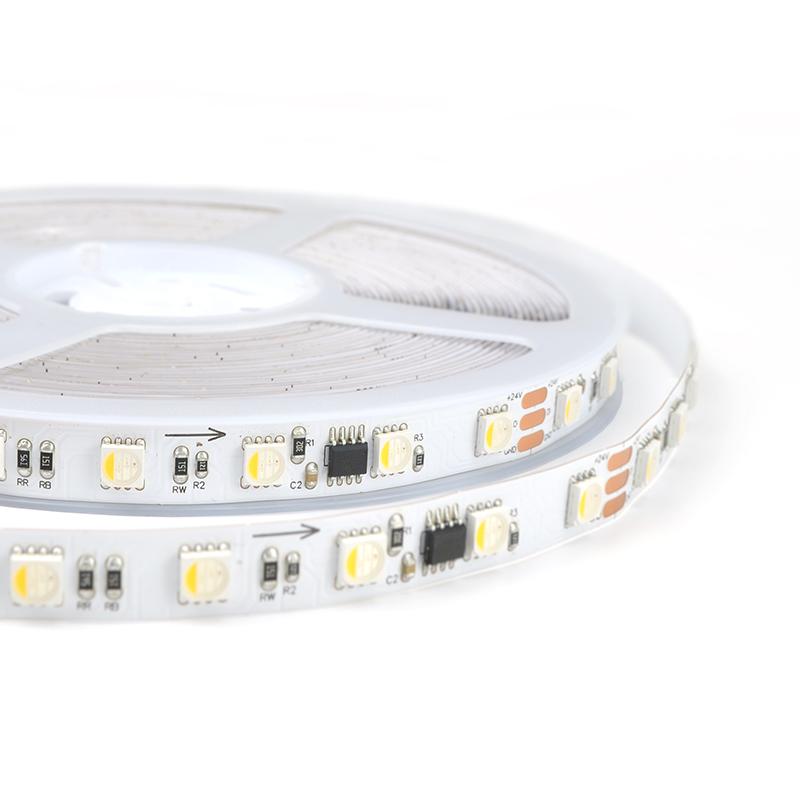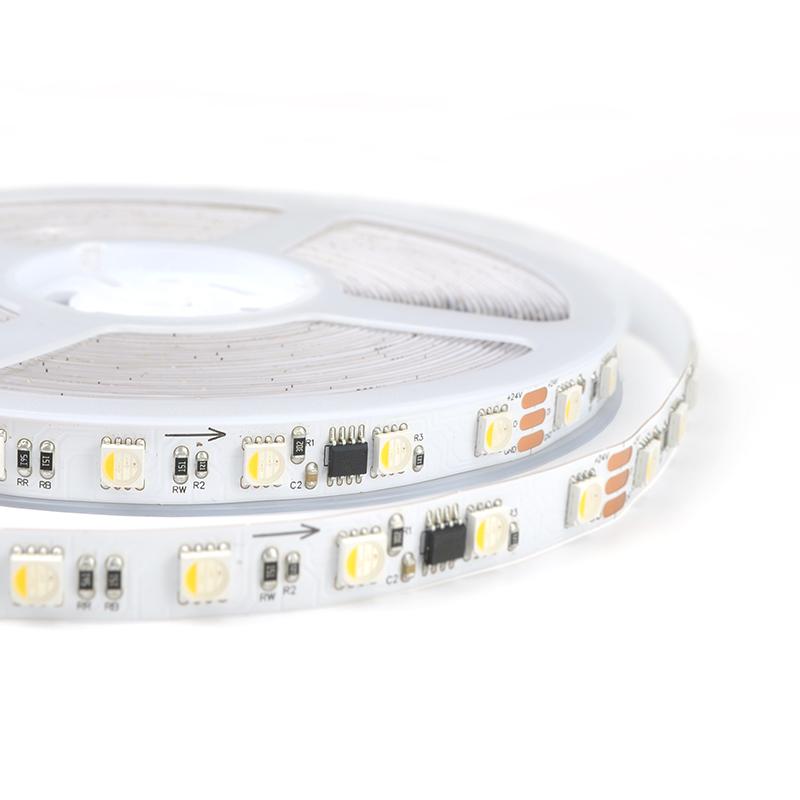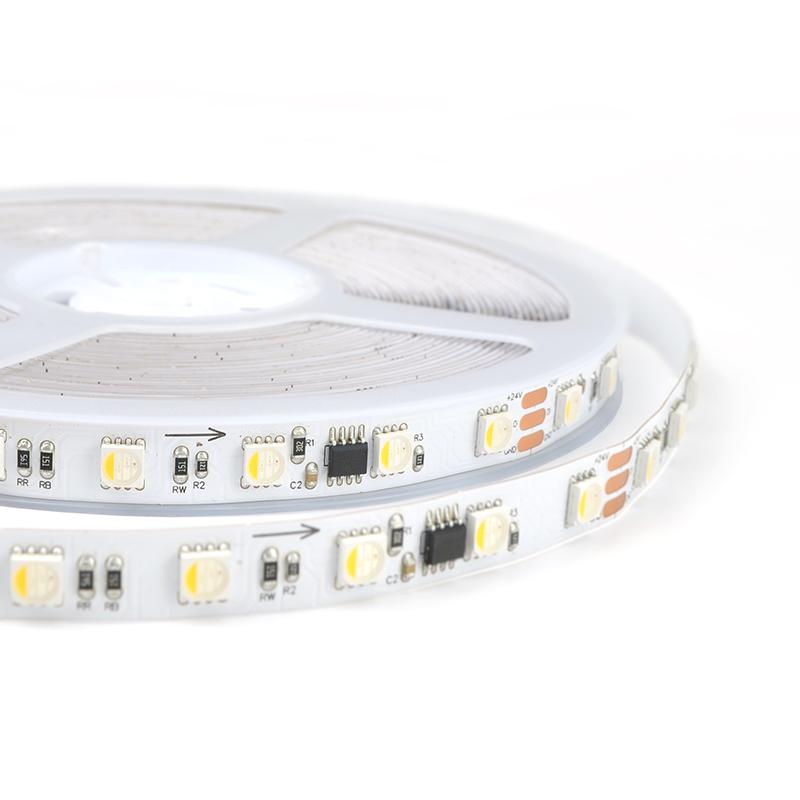24V SMD5050 RGBW SPI
Features
4 in one RGBW chips, Digital led strip has 60LEDs per meter
1+1 Ounce copper FPC, 5m per reel, 3M tape is included
White PCB, DC12V; Black PCB, DC24V
Cut-able every 50mm/12V, 100mm/24V
JST SM connector on each side, DC12 /24V constant voltage operation
The CCT of white can be customized as warm white or cool whiteStandard SPI protcel: WS2811/SM16703/UCS1903 2835 chipset -dual signal
- SKU NO.
- YR-ST-LV24-W12-60-RGBW-Pixel
- Voltage
- DC24V
- Power
- 19.2W/m
- Colour
- RGBW Pixel
- LEDs/M
- 60 LEDs/M
- CRI
- 90(only for White color)
- IP Rating
- IP20
- Min Cut Unit
- 100mm
- Efficiency
- 80Lm/w(only for White color)
- Working Temperature
- -25°C~+60°C
- PCB Wideth
- 12mm
- Warranty
- 3 Years
Description
SPI (Serial Peripheral Interface) LED strip is a type of digital LED strip that controls individual LEDs using the SPI communication protocol. When compared to traditional analog LED strips, it offers more control over color and brightness. The following are some of the benefits of SPI LED strips:
1. Improved color accuracy: SPI LED strips provide precise color control, allowing for the accurate display of a wide range of colors.
2. Fast refresh rate: SPI LED strips have fast refresh rates, which reduces flicker and improves overall image quality.
3. Improved brightness control: SPI LED strips offer fine-grained brightness control, allowing for subtle adjustments to individual LED brightness levels.
4. Faster data transfer rates: SPI LED strips can transfer data at a faster rate than traditional analog LED strips, allowing for changes to the display to be made in real time.
5. Simple to control: Because SPI LED strips can be controlled by a simple microcontroller, they are simple to integrate into complex lighting setups.
To control individual LEDs, DMX LED strips use the DMX (Digital Multiplex) protocol, whereas SPI LED strips use the Serial Peripheral Interface (SPI) protocol. When compared to analog LED strips, DMX strips provide more control over color, brightness, and other effects, whereas SPI strips are easier to control and suitable for smaller installations. SPI strips are popular in hobbyist and DIY projects, whereas DMX strips are more commonly used in professional lighting applications.


